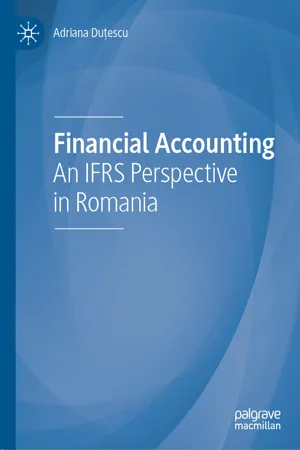Learning objectives:
- Understanding the importance of accounting in supporting management decisions
- Understanding the differences between financial and managerial accounting
- Understanding the connections between accounting and taxation.
1.1 About Accounting: A Brief History
Adriana Duţescu and Răzvan Hoinaru
Accounting and financial reporting are parts of the social sciences, meaning that they are socially constructed. Numbers may well look neutral, while accounts are structured in a rigid, but consistent in form; in fact, the reality might be a little different. There are many schools of thought in accounting that cast numbers in various lights. The best known ones are: positive accounting, Marxist accounting, Foucauldian, the critical school of accounting thought, etc.
On the other hand, the Mesopotamians, the Chinese, the Egyptians, the Venetians, and others had different accounting systems over time. The very basis of what we use nowadays dates back to 1494, when Luca Pacioli established the Golden Rules of Accounting (Assets = Equity + Liabilities). Later on, historians discovered a correlation in the Medici family wealth and proper use of accounting. However, when the golden rule was effectively out-smarted, the misuse of accounting technique revealed not only bad numbers, but also generated a decrease in wealth. This happened due to the capacity of accounting to better inform and its influence on decision-making process and end results.
Next, the mid-sixteenth century, particularly in Holland and the UK, came with a culture of accountability and a separation of different types of accounting. Factory owners and managers like Josiah Wedgwood had a deeper understanding of accounting than the bookkeepers themselves, who had very limited approaches to finance and production. It was during this time when a much clearer concept of a company’s current assets was separated from an owner’s equity, that a clearer concept of dividends and money effectively appeared. Shareholders were in a way, external to the company, despite having ownership of the company.
During the nineteenth century, professional guilds of accounting appeared and accounting started to be heavily regulated, not only by the professional associations, but also by the state (for example, Company Law in the UK). Nowadays, accounting is regulated by professional associations, states, supra-statist structures (i.e. the European Union [EU]), and international self-regulators like the International Accounting Standards Board (IASB), the Financial Accounting Standards Board (FASB) and Financial Accounting Foundation (FAF).
Various Parliaments and self-regulators around the world have been creating different sets of rules and new accounts, due to the economic needs of a society. Therefore, accounting is an economic technical discipline, but touches also on politics. Just ask yourself, ‘Why does the USA have its own particular set of accounting practices named the “US Generally Accepted Accounting Principles (US GAAP)”, while the EU uses the “International Financial Reporting Standards” (IFRS) as another set of standards?’ Accordingly, accounting and financial reporting are a mix of economics, local culture and politics. This leads to two different types of financial reporting: “principles based”, where guidelines are provided, and judgement is permitted during the preparation of the accounts, and “rules based”, where clear guidelines and instructions are established.
Other main differences between accounting systems are due to the beneficiary: managers, creditors or investors. These users have different needs for data and information. In such a way, accounting systems or financial reporting systems are more conservative or leave more space for adjustments. The “productive” type of accounting focuses more on a historical cost accounting and Balance Sheet approach, while the “financialised” accounting is more centred on market valuations, modelling, forecasts and fair value accounting.
Accounting is an information and measurement system that identifies, records and communicates relevant information about the activities of an organisation.
The primary objective of accounting is to provide useful information for effective decisions, such as assessing opportunities, products, investments, social, and community responsibilities. Another important objective is related to stewardship, meaning that accounting reports what managers (stewards) have used/shall use, and the resources entrusted to them by the owners.
To achieve its objectives, accounting includes activities such as: identifying, measuring, reporting, and analysing business events and transactions (i.e. exchanges between entities). Accounting also involves interpreting information and designing information systems to provide useful reports that monitor and control an organisation’s activities. The accounting department designs a system of internal controls for the organisation’s use, in order to promote efficiency, and prevent the unauthorised use of the company’s resources.
Accounting provides information only about transactions and events that can be expressed in money (i.e. currency units). The consequence is that important information, such as the capabilities of the management team or the imminence of a strike, although essential, cannot be translated into accounting language. Despite its limits, accounting offers information to interested parties about an organisation that is unique.
1.2 Business Entities
A very broad classification of organisations distinguishes them as “for profit” and “not-for-profit”. In the United States, two-thirds of the active workforce is involved in “for-profit” or business enterprises. Business enterprises may be: sole proprietorships (sole trader), partnerships or companies (corporations).
A sole proprietorship is an unincorporated business owned by one person who is often the manager as well. This small-sized business is not legally separated from its owner, and its duration expires when the owner either decides to terminate it or dies.
A partnership involves several people jointly owning and running a business. Some of those entities are large in size, i.e. international accounting firms, such as PricewaterhouseCoopers (PwC), Ernst & Young (EY), KPMG, Deloitte Touche Tohmatsu etc. A partnership is not legally separate from its owners, and each partner is responsible for the debts of the business (i.e. with unlimited liability). A partnership’s life expires by choice or withdrawal of partners. A partner’s shares cannot be sold without the agreement of the other partners. When this happens, a new partnership is formed. In the Anglo-Saxon world, partnerships were created to allow the provision of professional services by lawyers, doctors, architects, and a...
